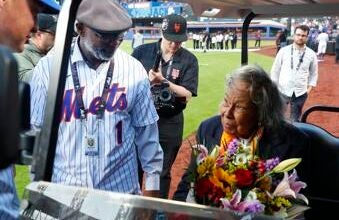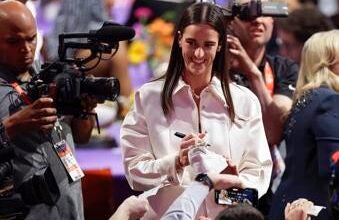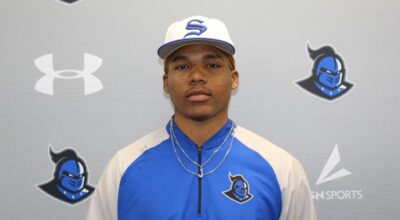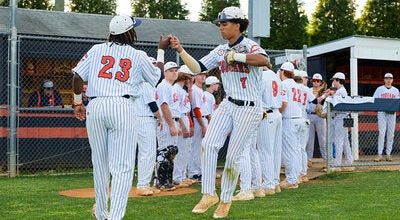Prep Football: Friday Night Legend: Charlie Little
Published 12:00 am Friday, September 23, 2011
SALISBURY — Pete Stout was the head coach of the 1971, 1973 and 1974 WNCHSAA champs that will be honored tonight at Salisbury’s Ludwig Stadium, and his strong right arm was always defensive coordinator Charlie Little.
Salisbury’s teams in that golden era were known for good offenses and great defenses. In those three championship seasons, SHS allowed an average of one TD per game and posted 14 shutouts.
Scoring just 16.6 points a game in a vicious SPC in 1974, the Hornets still went 11-2. That’s the year Salisbury beat Thomasville 7-6 in the regular season — and 7-6 again in a playoff rematch.
“Great football players make good coaches,” Little said with a chuckle. “We had a linebacker in those days — Terry Beattie — who was 6-foot-3 and ran a 9.8 100. It was kind of hard to get away from him.”
Little was an all-star high school lineman in Altoona, Pa., and Pennsylvania was a recruiting gold mine for Catawba in the late 1950s and early 1960s. Catawba had scholarships, while the small colleges in Pennsylvania didn’t.
Catawba also offered the green grass and blue skies of North Carolina to teens otherwise destined for the fire and ash of the steel mills and coal mines.
Catawba legends Gene Appler, Ron Nicewonger, Ron Crouse, Bucky Pope and Larry Beightol were all Pennsylvanians. They joined Little on the long trek south and were instrumental in Catawba winning the 1963 Carolinas Conference championship.
“Football was then and is now a great thing,” Little said. “It provides opportunity. A lot of times athletes make opportunity pan out.”
Little recalls his first meeting with Stout came on opposite sidelines on a football Friday. Both had been standouts at Catawba, but Stout’s career had preceded Little’s.
“I was at Madison-Mayodan where they’d just lost 30 in a row, and Pete was coaching Western Alamance, where they were winning big,” Little said.
Little’s guys almost pulled off a huge upset.
Stout, who had future coaching whiz Mike Carter playing quarterback, had to resort to trickery — a pass by a tackle — to get the winning touchdown.
Stout was hired to coach Salisbury’s Boyden High in 1966. The school had struggled since Bill Ludwig’s last season in 1958.
Meanwhile, marriage brought Little back to Salisbury.
Stout hadn’t forgotten that night against Madison-Mayodan, and Little was soon coaching his linemen. Stout and Little would form a titanic doubles team for decades.
In 1967, Boyden debuted in the South Piedmont Conference as part of the WNCHSAA. It was a brutal league that included A.L. Brown, Lexington, Thomasville and Concord, among others. Boyden would become known as Salisbury in 1971.
“Oh, yeah, that was the best league ever,” Little said. “Concord had great athletes and gave us the most trouble, but there were no nights off in the SPC. If you didn’t come to play, someone just tore your head off. One year in the Shrine Bowl, 13 of the 33 North Carolina players were from the SPC.”
There was a night in 1968 that Thomasville buried Boyden 45-0.
Little recalls the Bulldogs kept punching in scores with their first team. Salisbury’s state-champion wrestler Kary Clark, Little’s left tackle, broke his leg. Little was furious. Stout shook his head and said, “Don’t say anything. Just wait.”
Stout had the memory of an elephant. Payback came five years later in a 52-0 wipeout of Thomasville — in a WNCHSAA playoff game.
Little’s defense was the “wide tackle 6” — a six-man front that was virtually impossible to run against.
“We always put our best linemen on defense, and we stopped the great backs,” Little said. “When Haskel Stanback was at Kannapolis, I don’t believe he scored on us.”
The “wide tackle 6” sent a steady stream of Little-coached defensive linemen to the Shrine Bowl — James Teal, Steve Gribble, Robert Pulliam, John O’Neal, Danny Winecoff, Chuck Valley and Keith James — one after the other.
“We had a great coaching staff — guys like Bob Patton, Aaron Neely, Bob Pharr, Charles Hellard — and we had very good kids,” Little said. “We had athletes with footspeed. Pete won a lot of track championships with those kids. If you were a football player and didn’t have a job, you were on the track team.”
And if you didn’t want to run?
“Kenny Holt didn’t want to run,” Little said. “Pete sent him to the triple jump pit — and he won it.”
Salisbury slowed down South Point’s electric back Scott Crawford in the 1971 WNCHSAA title game but had to settle for a 14-14 tie.
Salisbury beat Watauga 13-0 for an outright 1973 WNCHSAA crown, and one of the greatest wins of the era came when the Hornets silenced Shelby 14-3 to make it back-to-back WNCHSAA titles in 1974.
“Great win because Coach (“Pearly”) Allen was one of the best,” Little said. “Shelby’s one of those places where they won all the time. They had that mystique.”
After the 1975 season, Stout, in search of the next challenge, took several assistants, including Little, with him to Burlington Williams.
One of the student managers the year before they arrived was Hal Capps. Capps wanted to play. They gave him a chance. He became a good player — and a great coach.
“I remember this guy, a perfect stranger, walking into the gym at Williams,” Little said. “He tells Pete there’s no way he can win there. Not with those country club kids.”
The stranger was proven wrong.
From 1979-82, Burlington Williams won 43 games in a row.





